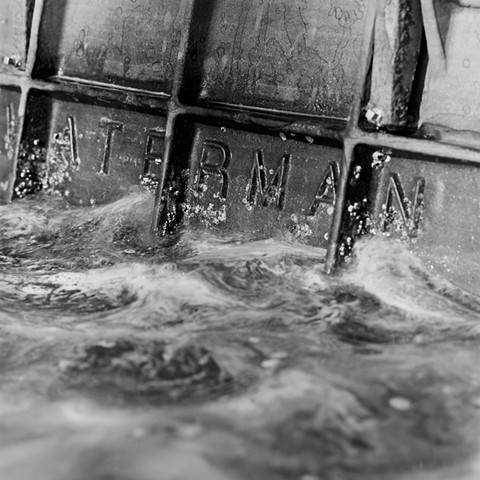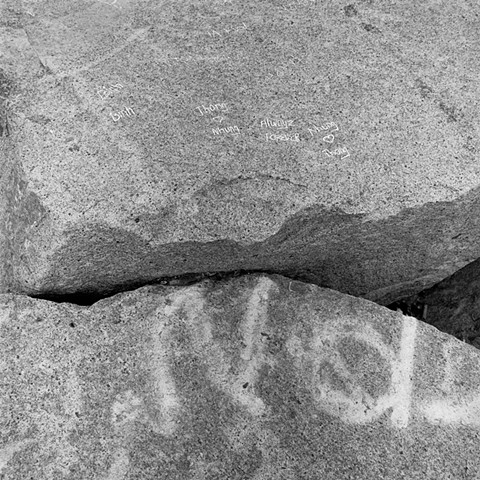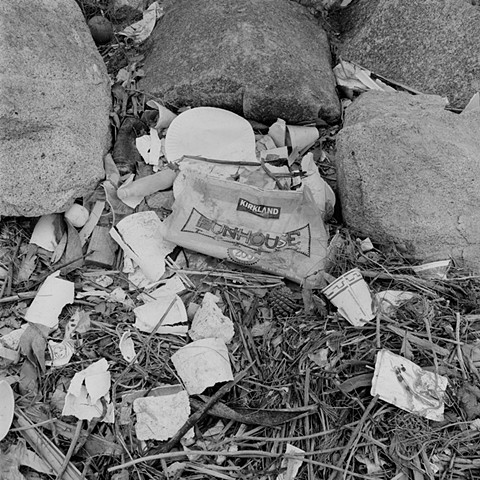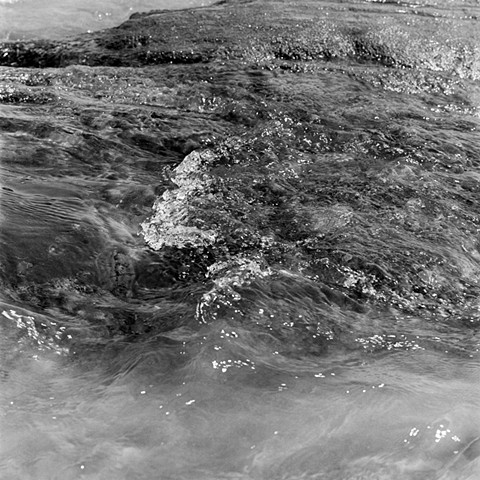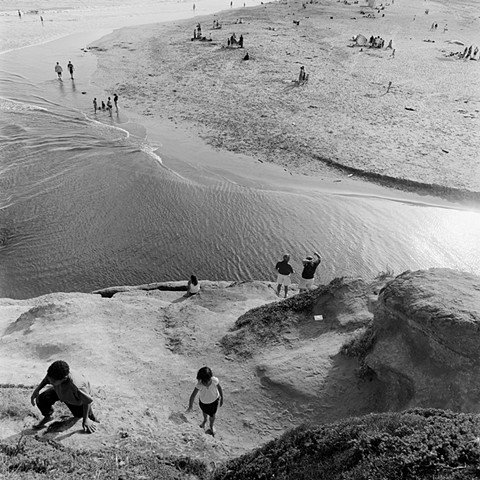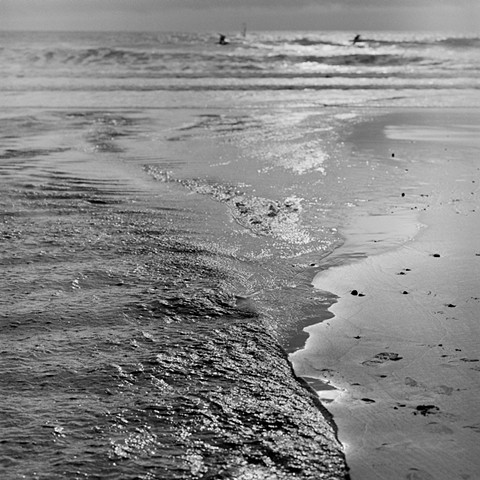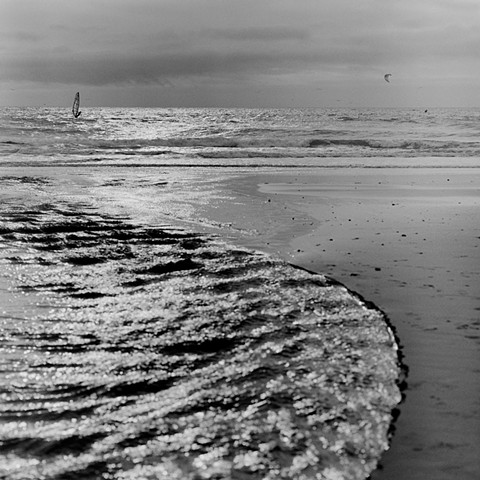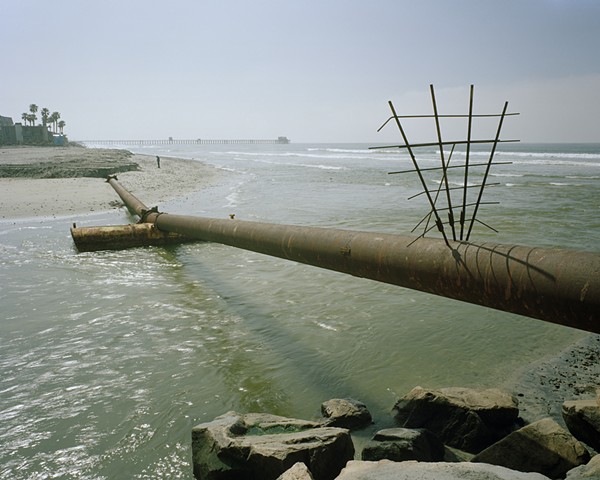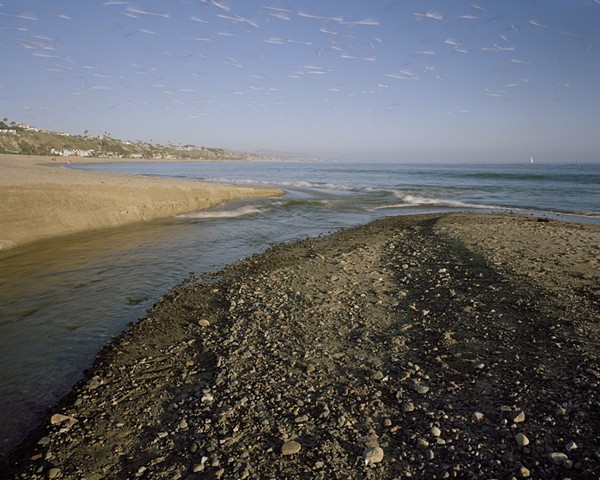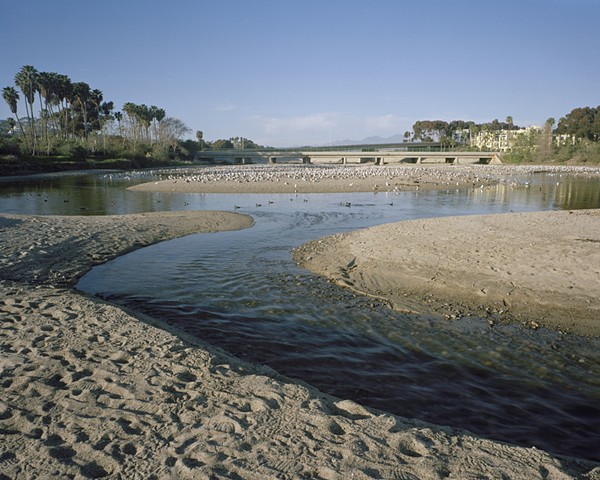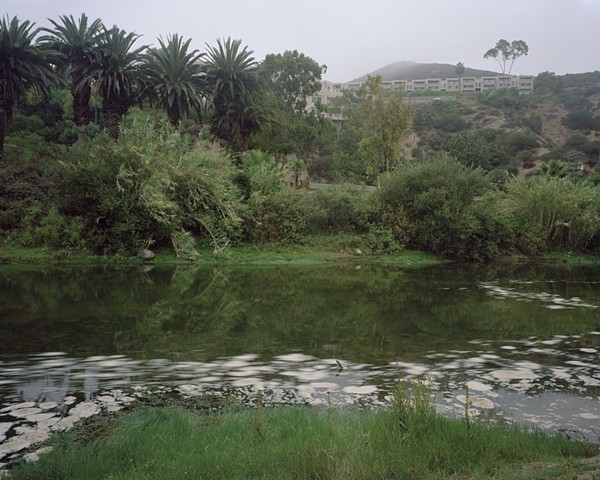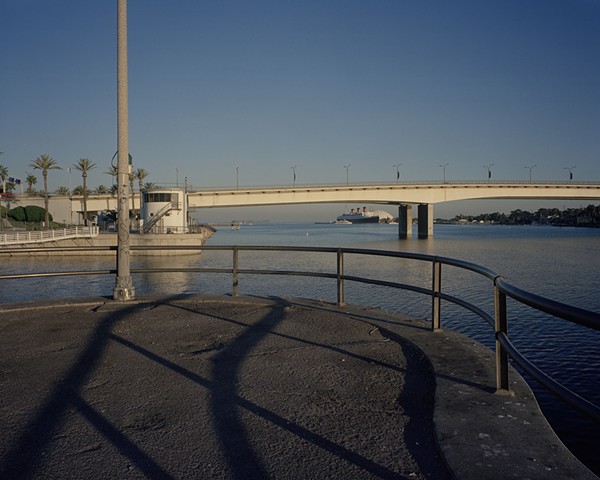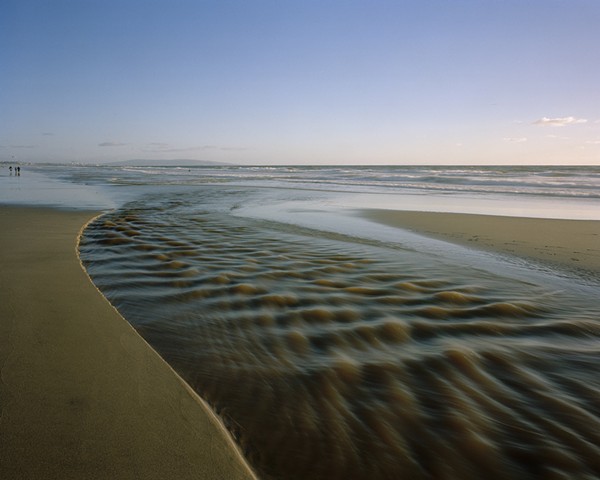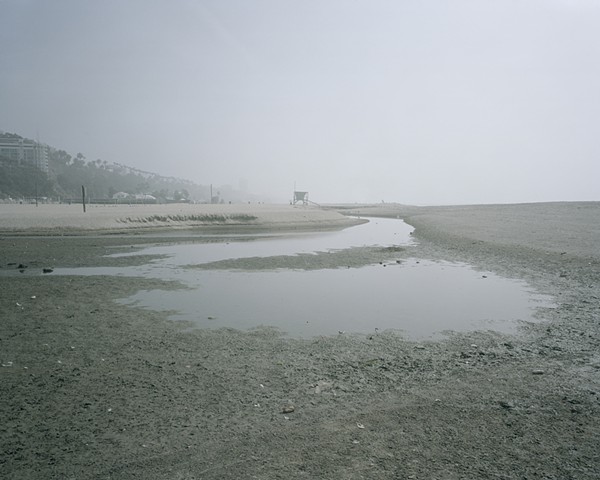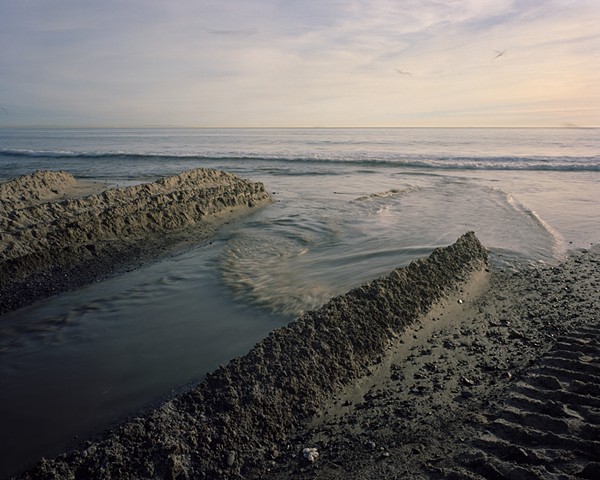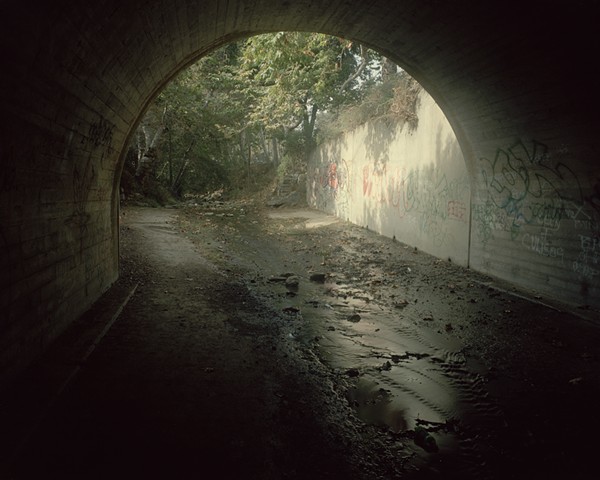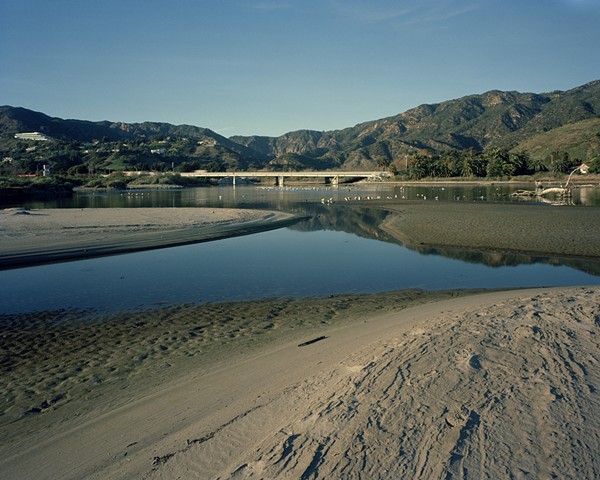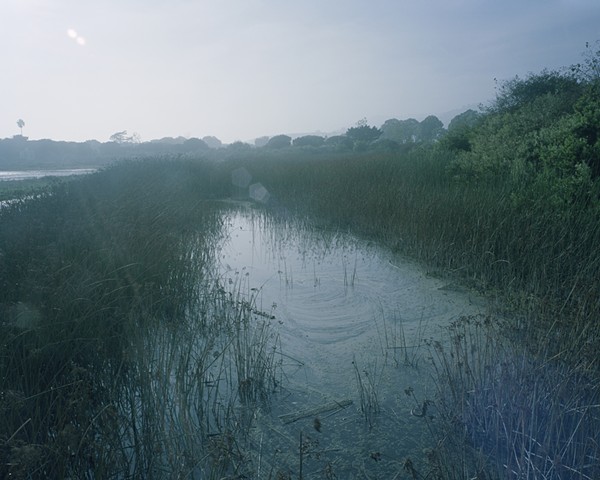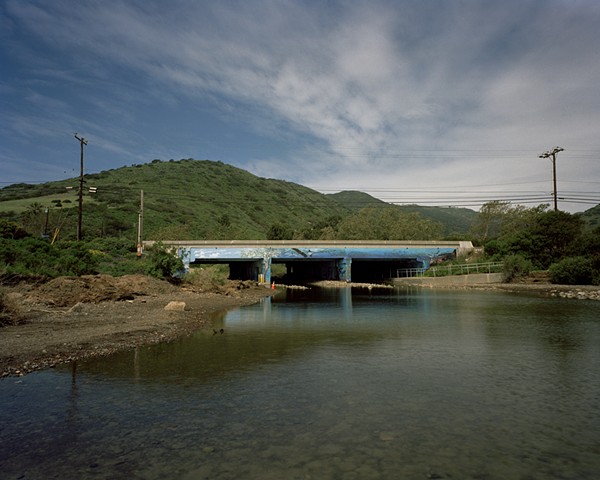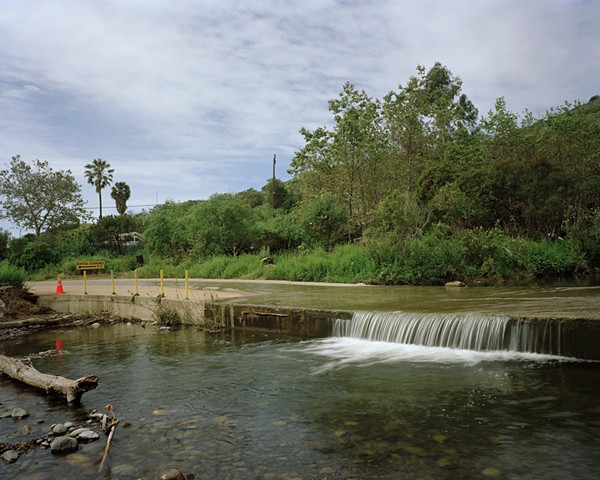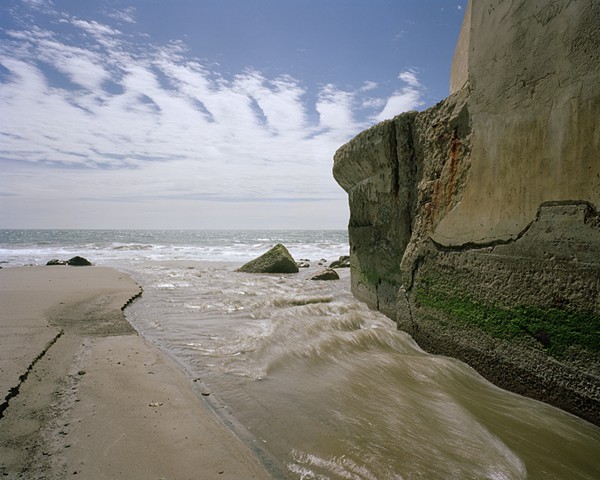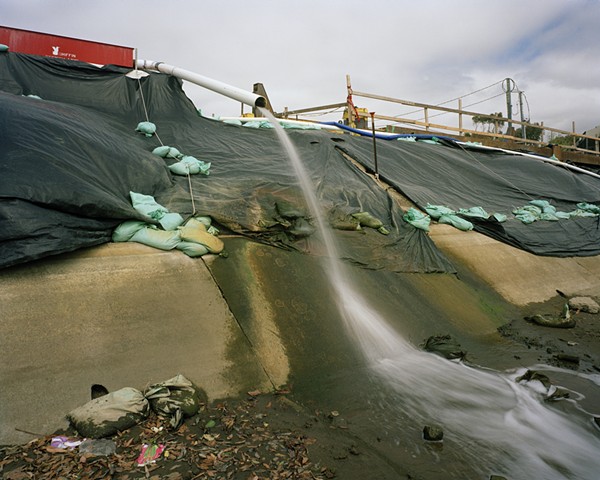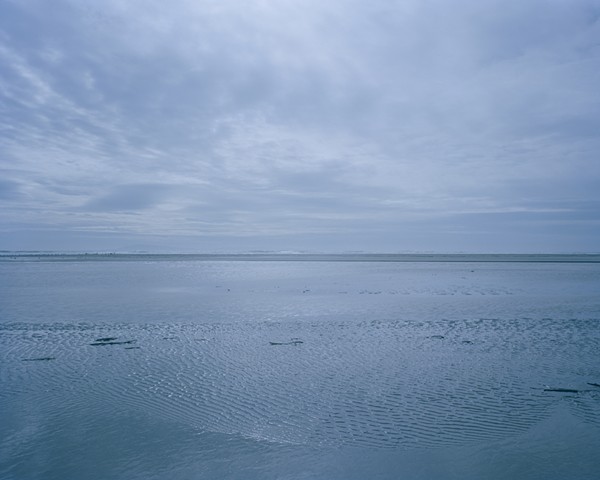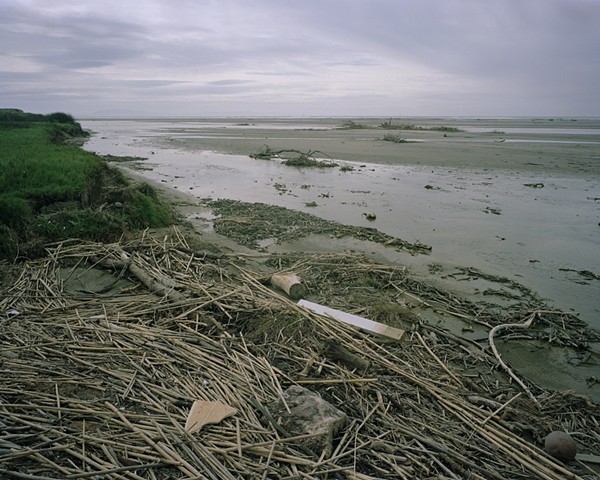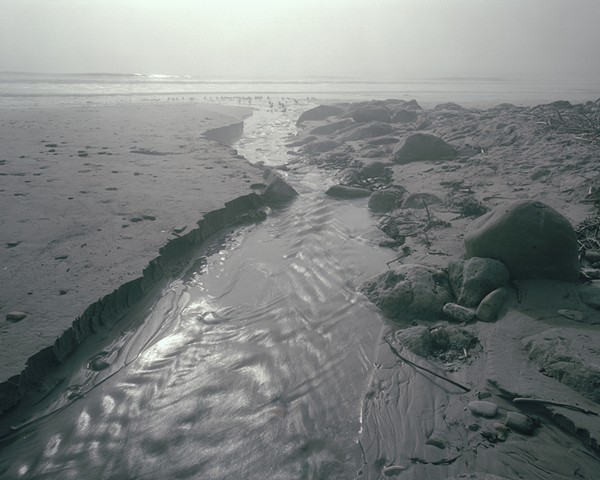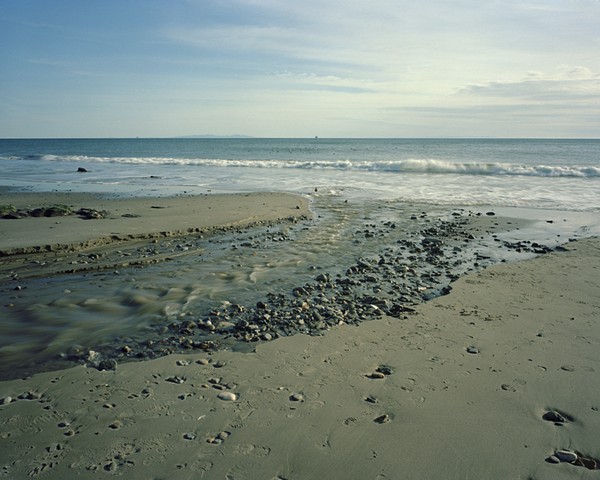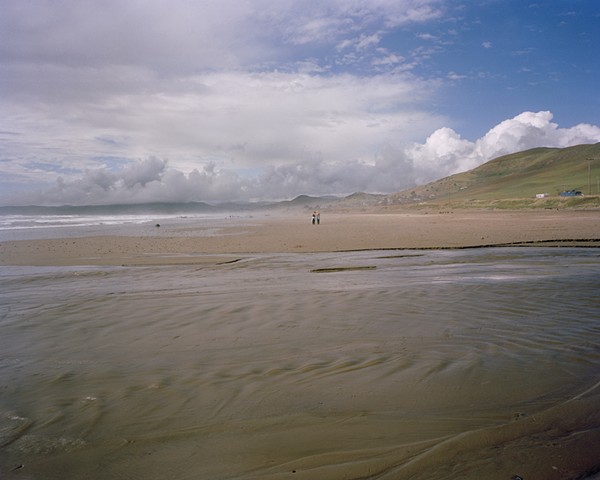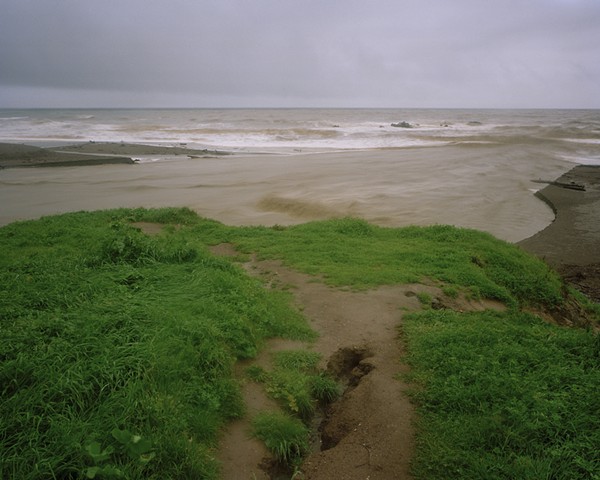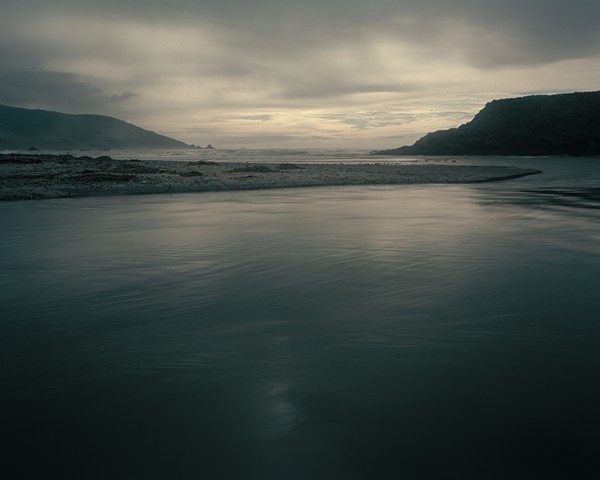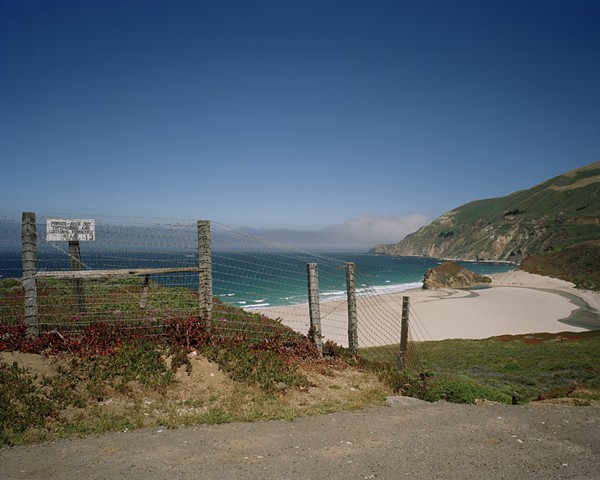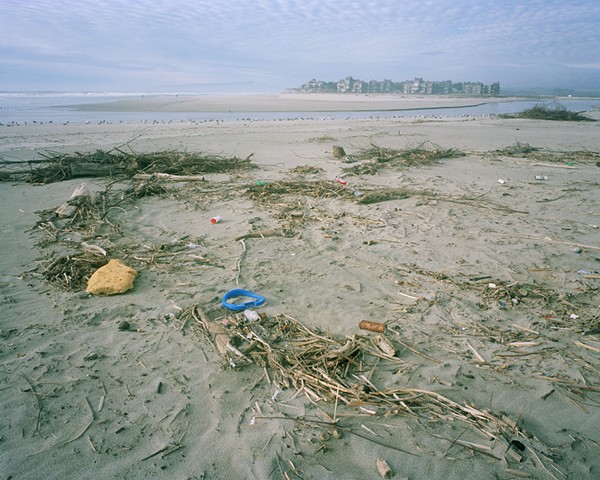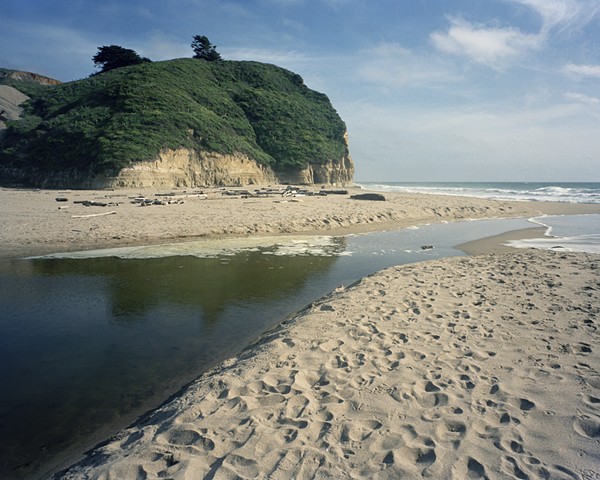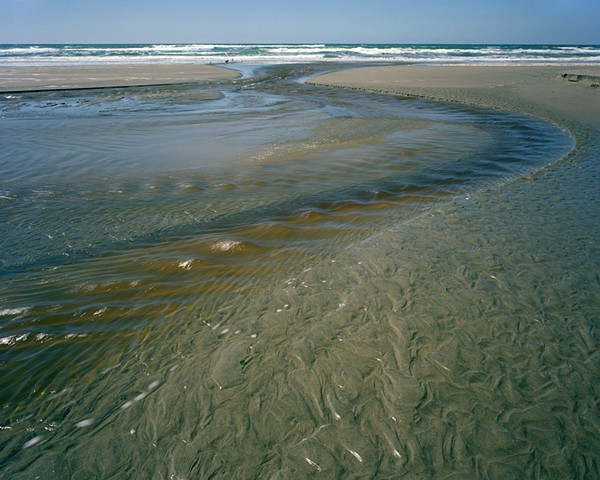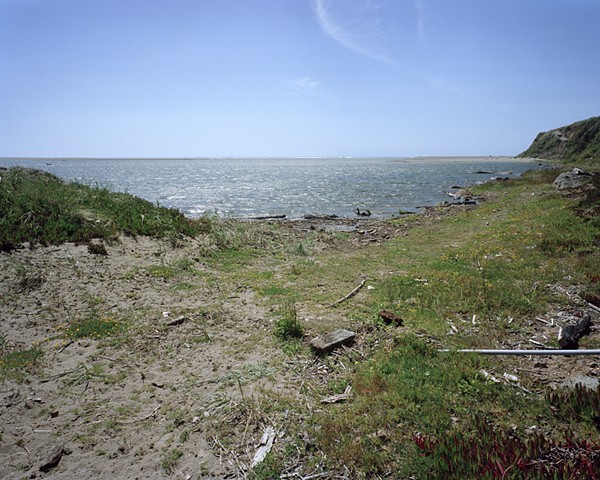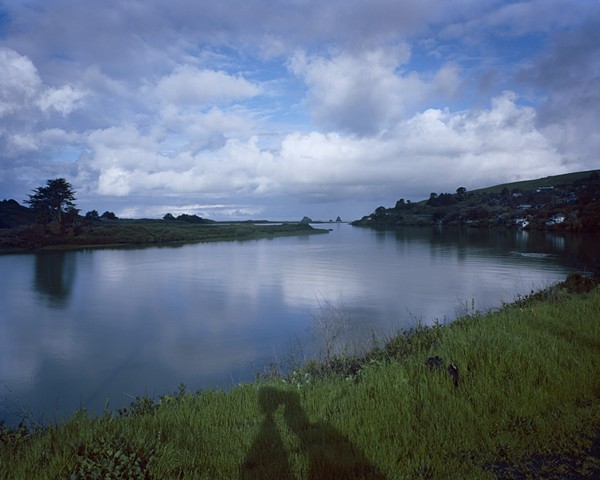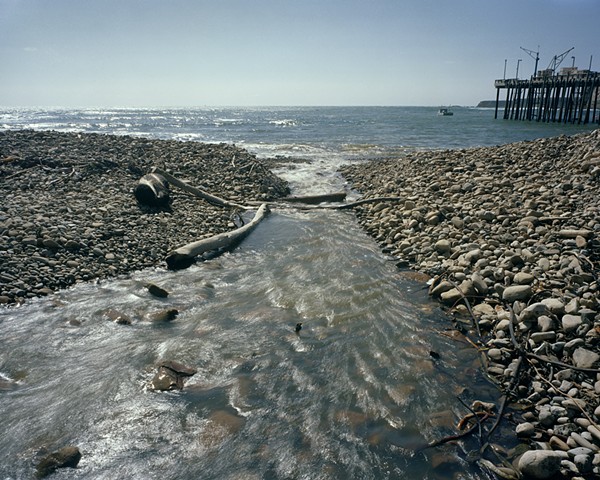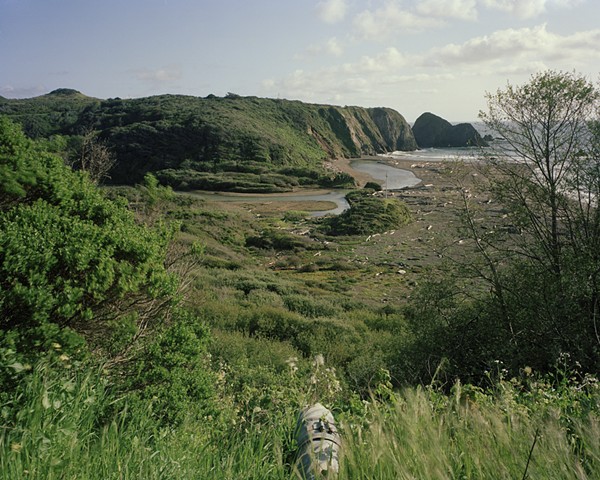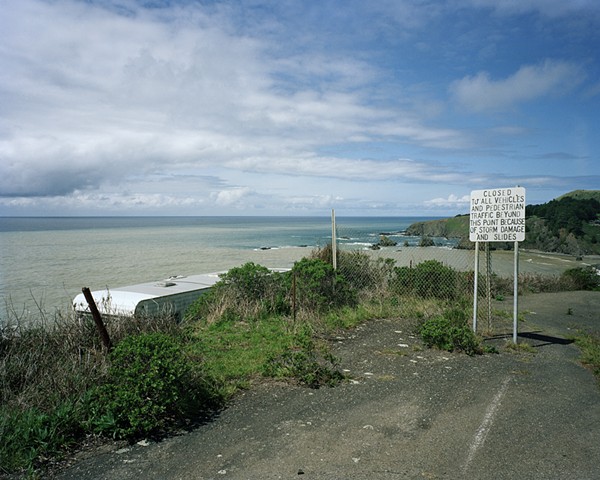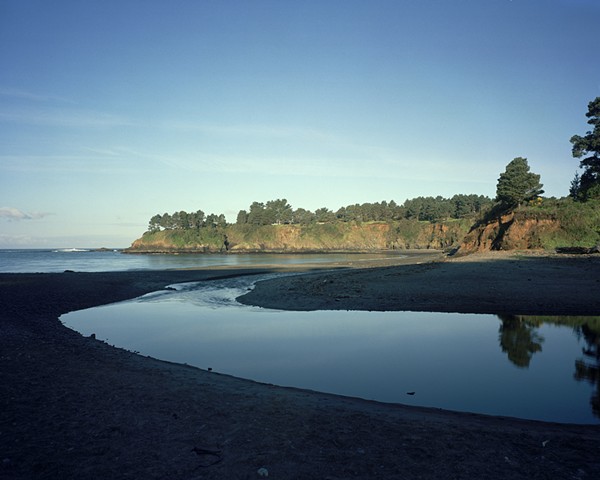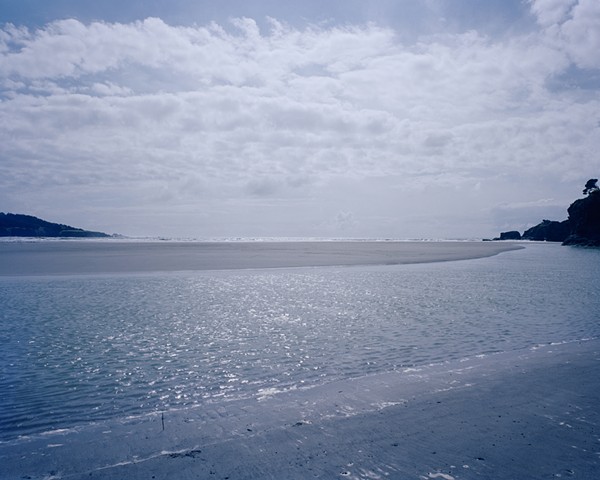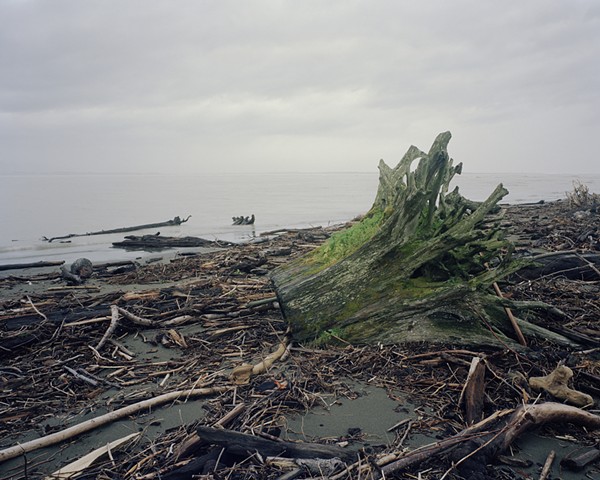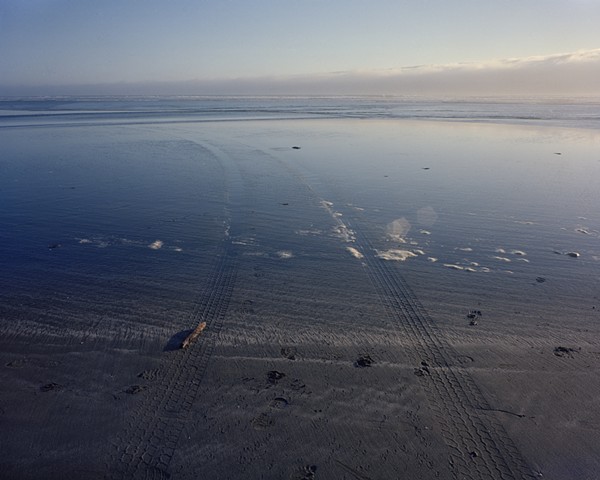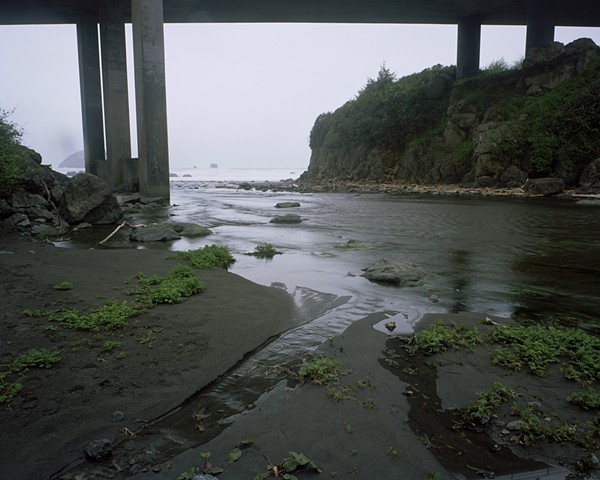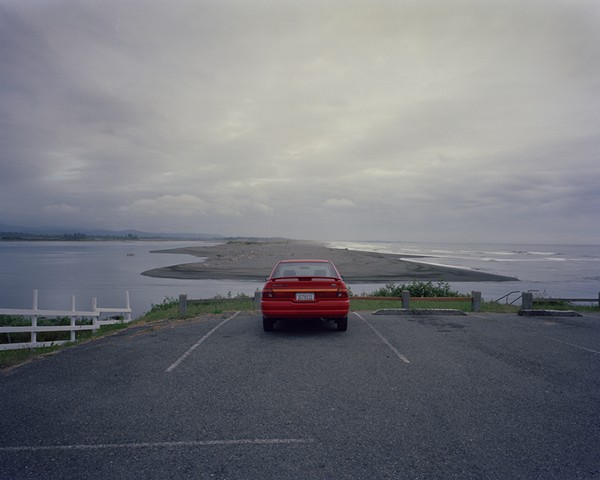Watershed Edge
Places in California Where Water Enters the Ocean
1999 - 2008
The idea for Watershed Edge first came to me while I was meditating. The title arose while reading Gary Snyder’s "A Place in Space: Ethics, Aesthetics, and Watersheds" in 1999.
Later, James Welling recommended a book by John Stilgoe, "Outside Lies Magic: Regaining History and Awareness in Everyday Places." In the final chapter “Endings,” Stilgoe’s words reinforced my conviction that my title was appropriate. He writes:
"The exploring, discovering walker or bicyclist creates a personal whole, realizes the relations of railroad rights-of-way and telephone poles, of wholesale grocery warehouses and mom-and-pop grocery stores, of political edges versus edges of watersheds. Nothing profound, nothing earth-shattering, but everything fitting into a private worldview."
It is in that spirit of exploration and discovery that I have undertaken the search for places in California where water empties into the Pacific Ocean. It was never my goal to generate a documentary of every river, creek, and storm drain that meets the sea, or even to focus exclusively on the main sites. Therefore, the sad Tijuana River, and the great Klamath River, although indeed visited, are absent from this body of work, for the light was not favorable. Rather than include okay pictures solely of important rivers, I have settled on what I hope will be perceived as good photographs of both ordinary and extraordinary places along the edge of land and sea. My intention was to go beyond mere informative documentation and endeavor to ride the edge of two discourses, namely, the documentary style of vernacular landscape, informed by contemplative fine art photography. In other words, my photographic sensibility in this series is outwardly non-fictitious and inwardly lyrical.
The word “watershed” means a turning point. I have looked for the “edge” of that turning point where fresh water meets salty, however, within that transition zone I have only found the movement of empty light and space. The frames presented here are frozen fragments of that ever-changing totality. They are intended to offer the viewer an emblem of what letting go of our attachments and aversions into a larger awareness might mean. Also, they endeavor to function as an honest index of my journey for future travelers of the California coast. I have little doubt that in times to come both climate change and declining governmental support of State Parks will leave their mark on these landscapes, until another turning point, when their value is acknowledged.
Being the type of person who doesn’t recall dates well, the years indicated in my titles are approximations. I have no problem remembering the circumstances surrounding each picture, and often even the exposure I used, however, the exact year each shot was taken escapes me. The first suite of black & white images was begun at the end of 1999, progressing through the year 2000, with a Hasselblad medium format camera. The color photographs were made with a Canham DLC 4 x 5 field camera and a vintage 90mm Schneider lens that was generously given to me by the WWII D-Day photographer Earl Witscher. I wish to extend special thanks to James Welling who encouraged me to switch to large-format color, and gave me access to the facilities at UCLA, and also to Steve Lehemer whose friendship and moral and technical support were invaluable to sustain the production of this work. Also, I wish to thank Mark Ruwedel who gave encouragement and advice. The late Jerry Burchfield, must also be thanked for his inspiration during the initial phases of this work. I am also indebted to the many friends who I visited during my travels, especially John Roevekamp and Donna-Lee Phillips. Their friendship and support is unrepayable. The contributors to the California Coastal Access Guide and California Coastal Resource Guide must also be thanked. Without those two books my journey would have been far more crooked and challenging. More than anyone I thank my wife Simone, and my daughters Jana and Emma for their understanding during my all too frequent absences on the many road trips that eventually pieced together this series.
